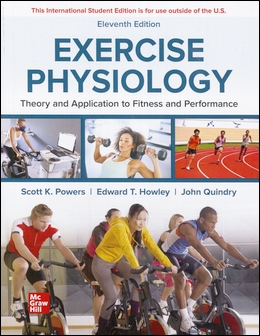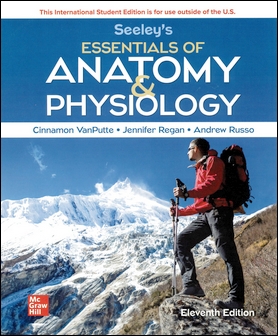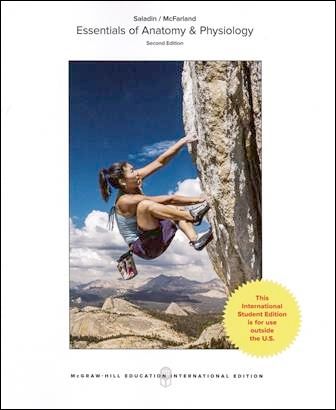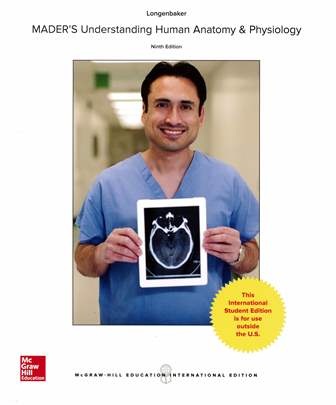書籍分類
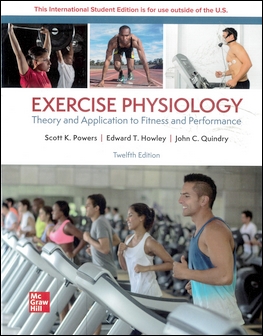
(E-Book) Exercise Physiology: Theory and Application to Fitness and Performance 12/e
作者:Scott Powers, Edward Howley, John Quindry
原價:NT$ 1,000
ISBN:9781266483516
版次:12
年份:2024
出版商:McGraw-Hill
頁數/規格:電子書
版次:12
年份:2024
出版商:McGraw-Hill
頁數/規格:電子書
內容介紹 目錄 作者介紹
- 電子書訂購前請先詳讀:
- 訂購付款完畢後,請填寫 電子書回報資料-官網訂單,資料若不全,將影響您後續派送權益
- 查看 電子書平台登錄與註冊說明
- 查看 電子書平台操作手冊
- 此訂單為電子書,非紙本課本,電子書兌換碼一旦派送,則無法辦理退貨。
- 若有任何問題請 Email 至 ebook@tunghua.com.tw
帳號訂購流程
Step 1 登入會員 非東華網站會員,請點選右上角『註冊』。
Step 2 點選 『加入購買』填寫相關資料,並確認訂單無誤後,即可送出訂單。
Step 3 審核訂單 訂購單會盡力於24小時內(遇周末假日順延)審核,確定有庫存,系統會發送『付款通知信』至指定信箱。
Step 4 付款 收到付款通知信後,請於七天內付款。
Step 5 電子書兌換碼 確認入帳後,約 1-3 個工作天派送電子書兌換碼,會發訊息至您的個人 email 信箱。
NEW TO THIS EDITION
The twelfth edition of this book has undergone major revisions to include the latest research in exercise physiology. Notably, new suggested readings and references have been added to all chapters. Also, three new chapters focused on "Exercise is Medicine" have been added; these new chapters replace Chaps. 15, 16, and 17 in the previous edition. Further, to improve the remaining chapters in the book, each chapter contains new and expanded discussions, fresh text boxes, and more than 100 new figures were added to this edition. The following provides a brief chapter-by-chapter summary of some of the important changes made to the twelfth edition of this book:
Chapter 0: A new section was added on advances in exercise physiology research tools; this segment includes a discussion of the use of "omics" in exercise physiology research. Moreover, new updated information about exercise-induced changes in white adipocytes was added. Finally, fresh information on the discovery that extracellular vesicles play a role in cell-to cell signaling was added to the revised chapter.
Chapter 1: Numerous new photos illustrating various types of ergometers were added to the chapter along with new information about using MET-hours per week to track the intensity and volume of exercise performed.
Chapter 2: New information added about the role that extracellular vesicles play in both paracrine and endocrine signaling. This fresh material is illustrated by a new figure highlighting the role that extracellular vesicles play as a signaling mechanism for both paracrine and endocrine signaling.
Chapter 3: This revised chapter contains several new figures including fresh illustrations depicting the impact of both temperature and pH on enzyme activity. Further, the discussion about the role that carbohydrates (i.e., glycogen) play in energy production has been expanded in the revised chapter.
Chapter 4: Several new figures were added to this chapter along with a discussion about the four domains of exercise intensity. Further, the revised text contains a new and updated discussion about sources of ATP in the transition from rest-to-exercise. Finally, this imp proved chapter also contains new discussion about the mechanisms responsible for excess post-exercise oxygen consumption.
Chapter 5: New information has been added about the role that the endocrine system plays in regulating the acute exercise response, control of bioenergetics, and the adaptive responses to exercise training, A new figure summarizes a technique used to measure plasma volume changes during exercise.
Chapter 6: New information about viruses has been added to this chapter a discussion ab about how regular physical activity protects the body against viral infection. A new Clinical Application provides updated research findings on the impact of aging on immune function, and how regular exercise can slow the effects of aging on the Immune system. The addition of a new students with a better understanding of how the immune system responds to breaks in the skin and bacterial exposure. Clinical Applications 6.2 is also new to this chapter, providing students with a clear understanding of how a physically active lifestyle reduces the risk of hospitalization and death during COVID-19 infection.
Chapter 7: Updated research findings detail the mechanistic links between exercise and the improvement of central nervous system function through the release of brain-derived neurotropic factor and other chemical factors. An updated and expanded discussion of exercise and multiple sclerosis is provided in Clinical Applications 7.1. The discussion on sport-related brain injuries is updated with new key information. A new sub-section on motor unit aging and the protective influence of exercise training was added to the chapter.
Chapter 8: This revised chapter contains new figures and the latest information on excitation contraction coupling along with an expanded discussion about the cause of exercise induced muscle cramps
Chapter 9: Several new figures are provided, including the cardiac pressure volume responses compared between rest and high intensity exercise. The section on exercise and beta-blockade has been updated and includes a new illustration to highlight the key physiologic effects of beta blockade on heart rate at rest and during exercise.
Chapter 10: This chapter has been revised to provide information about the impact that severe COVID-19 has on the lung and pulmonary gas-exchange. Further, a new research focus box was added to discuss exercise-related transient abdominal pain (aka, stitch). The incidence of this problem during exercise is discussed as well as the potential mechanisms responsible for this common exercise-related ailment.
Chapter 11: Updated research findings highlight the importance of pH regulation during acute exercise. The Winning Edge 11.1 has been updated to include new research related to use of sodium bicarbonate, sodium citrate, and beta-alanine as dietary supplements to improve blood buffering capacity during exercise.
Chapter 12: New information on sweat rates during exercise provide the student with an updated discussion of the physiologic control of sweating during exercise in hot environments. In addition, new information and a new illustration is provided to discuss the eccrine, apocrine, and apoeccrine control of sweating. Research Focus 12.1 has been revised to provide students with an improved understanding about training techniques to achieve heat adaptation during exercise in a cool environment.
Chapter 13: Several new figures have been added to this chapter along with an expanded discussion about the role that training-induced adaptations in skeletal muscle play in dampening the afferent feedback from type Ill and IV afferents to the cardiorespiratory control centers during exercise. Further, the discussion of the impact that training-induced increases in mitochondrial volume has on the regulation of bioenergetics has been updated. A new box feature was added to discuss the role that genetic endowment plays in determining athletic performance. Lastly, the section on muscle adaptations to anaerobic
training has been expanded to include the latest information on this topic.
Chapter 14: This chapter has been updated to include new information about the impact formation of resistance training on the properties of specific muscle fiber types. Also, a new box feature explores the role of blood flow restriction as a new tool for rehabilitation from musculoskeletal injuries.
Chapter 15: This chapter is new to the twelfth edition of this book and is the first chapter of a three chapter trilogy on "Exercise is Medicine." This initial chapter (Exercise is Medicine-part 1) focuses on exercise as a positive health behavior that can reduce the risk of chronic diseases. This chapter also discusses the health risk associated with both sedentary behavior and physical inactivity. Much of this chapter focuses on the evidence that both aerobic and resistance exercise reduce the risk of all-cause mortality and chronic diseases. Importantly, the chapter also discusses the mechanisms responsible for this exercise-induced protection against chronic diseases.
Chapter 16: This chapter is the second new unit in the Exercise is Medicine series. Most of the chapter focuses on the role of exercise as an effective therapy for chronic diseases including cardiovascular diseases, cancer, chronic obstructive lung disease, and type 2 diabetes. The chapter closes with a discussion of exercise as a therapy to diminish the age-related declines in physiological function (i.e., decreases in VO2 max, sarcopenia, and loss of bone mineral density).
Chapter 17: This chapter is the third and final new chapter in the Exercise is Medicine trilogy. The focus of this chapter is a discussion of the current U.S. physical activity guidelines for health. This unit also discusses the exercise prescription to improve both cardiorespiratory fitness and muscular strength. The chapter closes with a summary of training methods to improve flexibility.
Chapter 18: This chapter has been revised to include new information about the impact of exercise alone on long-term weight loss. Further, the latest information about the impact of combining exercise and diet on both weight loss and the maintenance of fat free mass has been added. Lastly, new information has been added to explain the impact that specific exercise modalities have on the reduction in visceral fat.
Chapter 19: Significant changes were made throughout this chapter including new figures, featured sections, and new research findings. A new Winning Edge box highlights research and coaching efforts to break the 2-hour marathon. An updated discussion about the potential sites of exercise-induced uscular
fatigue is included in this revised chapter.
Chapter 20: This chapter includes many updated sections on training for improved athletic performance. Updates include a discussion of concurrent training in previously sedentary persons. An updated and expanded discussion of interval training includes a new figure that compares moderate intensity continuous training versus high intensity interval training and sprint interval
Chapter 21: This revised chapter has been updated in several areas. For example, new research about the impact of exercise training on children has been added. Also, a revised discussion about the risk for sudden death in young athletes is provided. New research findings related to exercise and pregnancy is also included, in addition to an updated discussion on the increased risk for knee injury in females. A new Research Focus box provides a cutting-edge discussion of sex as a biological variable in exercise and sport-related research. Lastly, the discussion of exercise and aging is expanded in a new section on the benefits of lifelong exercise.
Chapter 22: The revised chapter includes updated research findings in several areas. For example, an expanded discussion about the impact of rinsing the mouth with carbohydrate solutions to improve exercise performance has been added. Also, a new section on time-restricted feeding has been added to the revised text.
Chapter 24: This updated chapter includes a new section on performance enhancing technology. New information on wearable devices, running shoes with carbon plates, klapskates for elite speed skaters, blade-prosthetics for persons with lower-limb amputations, and performance-enhancing competitive swimsuits has been added. Further, an updated figure on cycling equipment and bike racing techniques has been added to this chapter.



